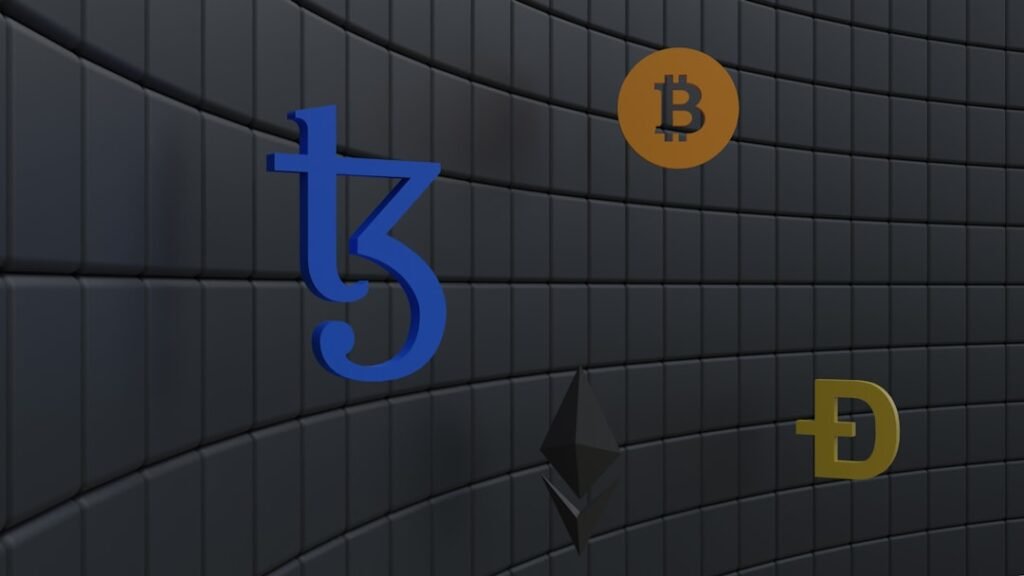Cryptocurrency Grid Trading Strategy: The Ultimate Automated Tool for Beginners?
In the fast-paced world of cryptocurrency trading, where prices fluctuate wildly and opportunities emerge and vanish in seconds, automation has become increasingly appealing. Among the various automated trading strategies available, grid trading stands out as a potentially accessible approach for newcomers. But is this method truly suitable for beginners? Let's explore cryptocurrency grid trading strategies, how they work, their benefits and limitations, and whether they deserve a place in your trading toolkit.
Understanding Grid Trading: The Basics
Grid trading is a systematic strategy designed to capitalize on price volatility within a defined range. Imagine overlaying a grid on a price chart. The core idea involves placing multiple buy and sell orders at predetermined price levels above and below the current market price, creating a "grid" of potential trades.
Here's how it works:
- Define the Range: You set an upper price limit (ceiling) and a lower price limit (floor) within which you believe the asset's price will fluctuate.
- Set Grid Levels: You divide this price range into smaller intervals (the "grid spacing"). For example, if Bitcoin is trading at $30,000, you might set a range from $28,000 to $32,000 with a grid spacing of $500. This creates buy levels at $28,000, $28,500, $29,000, $29,500, etc., and sell levels at $30,500, $31,000, $31,500, $32,000, etc.
- Place Orders: The grid trading bot automatically places limit buy orders at each grid level below the current price and limit sell orders at each grid level above the current price.
- Capture Volatility: As the price moves up and down within the defined range:
- When the price falls to a buy level, the bot executes the buy order.
- When the price subsequently rises to the next higher grid level (or a designated sell level), the bot executes a sell order, locking in a profit on that specific grid segment.
- The process repeats continuously as long as the price oscillates within the set boundaries.
The goal is to profit from the natural ebb and flow of the market, making small gains on each price swing between grid levels.
Why Consider Grid Trading? Potential Benefits
- Automation & Reduced Emotion: Once configured, the bot runs 24/7, executing trades based on predefined rules. This removes emotional decision-making (like panic selling or FOMO buying) and ensures disciplined execution, even when you're asleep or away from screens.
- Profit Potential in Sideways Markets: Cryptocurrency markets often experience periods of consolidation or sideways movement (ranging markets) where trend-following strategies struggle. Grid bots thrive in these conditions by repeatedly buying low and selling high within the established range.
- Simplicity of Concept: The core idea of buying low and selling high within a range is relatively easy to grasp compared to more complex trading strategies involving intricate indicators or chart patterns.
- Built-in Risk Management (Theoretically): Each buy order has a corresponding sell order placed at a higher level, aiming to secure a profit on that segment. Some bots also allow setting overall stop-loss limits.
- إمكانية الوصول: Major exchanges like Binance, KuCoin, and Bybit now offer built-in grid trading bots, often free to use (you only pay standard trading fees). This lowers the barrier to entry compared to complex third-party bot setups.
The Flip Side: Challenges and Risks for Beginners
While appealing, grid trading isn't a magic bullet and presents significant challenges, especially for newcomers:
- Highly Dependent on Market Conditions: Grid bots excel in sideways, range-bound markets but perform poorly in strong, sustained trends.
- Downtrend Risk: If the price breaks below your set lower limit and continues falling, the bot will keep buying at lower levels ("catching falling knives"), potentially leading to significant unrealized losses until the price recovers above a sell level.
- Uptrend Risk: Conversely, if the price breaks above your upper limit and keeps rising, the bot sells its holdings too early, missing out on substantial potential profits from the upward trend. Your capital is then stuck on the sidelines or deployed buying back in at higher prices.
- Whipsaws and False Breakouts: Cryptocurrency markets are notorious for sudden, sharp reversals (whipsaws) and temporary breakouts that quickly reverse (false breakouts). These can trigger multiple buy or sell orders in quick succession at unfavorable prices, eroding profits or increasing losses.
- Parameter Optimization is Crucial (and Complex): Success hinges entirely on correctly setting:
- Price Range: Too narrow, and price breaks out quickly; too wide, and capital is tied up inefficiently.
- Grid Spacing: Too tight, and fees eat into profits from small price moves; too wide, and you miss potential opportunities within the range.
- Capital Allocation: How much funds per grid level? Balancing risk and potential return is key. Getting these parameters wrong significantly impacts profitability. Optimizing them requires understanding market volatility and historical price action – not beginner-level knowledge.
- Requires Capital Commitment: To place orders across multiple grid levels simultaneously, you need sufficient capital allocated to the bot. This capital is essentially locked into the strategy while the bot is active.
- Fees Matter: Frequent buying and selling, especially with tight grid spacing, can lead to substantial trading fees that quickly eat into small profits generated per grid level.
- False Sense of Security: Automation doesn't equate to guaranteed profits. Markets can behave unpredictably. Beginners might mistake the bot's activity for success without fully understanding the underlying risks and performance metrics.
Types of Grid Trading Bots
Understanding the variations helps in choosing the right approach:
- Spot Grid Bots: The most common type, operating on the spot market where you buy and sell the actual cryptocurrency. They aim to accumulate the asset by buying low within the range and selling portions higher.
- Futures Grid Bots: Operate using derivatives contracts (futures). These allow for long (betting on price increase) or short (betting on price decrease) strategies and leverage (amplifying gains و losses). Significantly more complex and risky than spot bots, generally not recommended for beginners.
- AI-Powered Grid Bots: Some platforms (like Bybit's Aurora AI) or third-party bots use algorithms to analyze market data and dynamically adjust grid parameters (range, spacing) based on perceived volatility and trends. While potentially more adaptive, they add another layer of complexity and may involve higher costs.
Getting Started: A Beginner's Cautious Approach
If you're a beginner intrigued by grid trading, proceed with extreme caution:
- Master the Basics First: Before touching a bot, ensure you have a solid understanding of cryptocurrency markets, technical analysis (support/resistance, trends), risk management principles, and how your chosen exchange works (order types, fees).
- Choose a Reputable Platform: Start with the built-in bots on major exchanges like Binance, KuCoin, or Bybit. They are generally well-integrated, reliable, and have user interfaces designed for accessibility. Avoid complex third-party bots initially.
- Paper Trade Extensively: Every major exchange offering bots also has a paper trading (simulated trading) feature. Use this relentlessly. Test different grid parameters (ranges, spacing, capital allocation) across various market conditions (sideways, uptrend, downtrend, volatile). Analyze the results – profitability, drawdowns, win rate, impact of fees. This is invaluable, risk-free learning.
- Start Small with Real Capital: Once comfortable via paper trading, allocate only a very small portion of your total capital that you can afford to lose completely. Treat it as tuition money for learning.
- Select a Sideways Market: Actively monitor the market. Only deploy your grid bot when an asset is clearly consolidating in a range, not during strong trends. Identify the range boundaries using support and resistance levels.
- Set Conservative Parameters:
- Use a wider price range than you initially think is necessary to account for volatility.
- Use wider grid spacing to reduce the number of trades and associated fees.
- Allocate minimal capital per grid level.
- Always set a sensible overall stop-loss to limit potential downside.
- Monitor Closely (Don't Set & Forget): Automation isn't permission to ignore your bot. Regularly check its performance. Is the price still within the range? Has volatility increased, making your parameters obsolete? Is the bot accumulating losses in a downtrend? Be prepared to manually stop the bot if market conditions change unfavorably.
- Focus on Learning, Not Profit: Your primary goal as a beginner should be understanding how the bot behaves, how different settings affect performance, and how it reacts to various market movements. Any profit at this stage is a bonus.
Optimization: Beyond the Basics
As you gain experience, consider ways to potentially enhance grid bot performance (still requiring significant understanding):
- Dynamic Grid Adjustments: Manually widening/narrowing the range or adjusting spacing as volatility changes.
- Trend Filtering: Using simple indicators (like moving averages) to pause the bot during strong trends identified by the filter.
- Correlation Analysis: Using bots on uncorrelated assets to potentially diversify risk.
- Sentiment Integration: Being aware of major news events that could cause breakouts and adjusting/pausing the bot accordingly.
Is a Grid Trading Bot Suitable for Beginners? The Verdict
The answer is nuanced: Grid trading bots can be accessible to beginners in terms of availability on major exchanges and the relative simplicity of the core concept. However, they are not inherently easy or low-risk for beginners.
- The Pitfalls: The critical challenges – susceptibility to trending markets, vulnerability to whipsaws, the complexity of optimal parameter setting, capital commitment, and fee sensitivity – are significant hurdles for someone new to trading. Misunderstanding these risks can lead to quick losses.
- The Potential Path: For a disciplined and patient beginner willing to invest substantial time in education and paper trading, a grid bot can serve as a practical tool to:
- Learn about market dynamics and volatility.
- Practice systematic, rules-based trading.
- Gain firsthand experience with automation.
- Potentially generate modest returns in specific market conditions with careful management.
Crucially, grid trading should not be seen as a passive income stream or a beginner's primary strategy. It's a specialized tool with specific use cases and inherent risks.
Conclusion: Automation with Awareness
Cryptocurrency grid trading bots offer an automated method to potentially profit from market volatility within defined ranges. Their availability on major platforms makes them seem like an attractive entry point for beginners. However, their effectiveness is highly contingent on correctly identifying sideways markets, meticulously optimizing parameters, and actively managing risk – tasks that require experience and market understanding.
For the absolute beginner, grid trading bots present substantial risks that can easily outweigh the potential benefits. Thorough education, extensive paper trading, starting with minimal capital, and managing expectations are non-negotiable prerequisites. Used cautiously as a learning tool within a broader trading education, they can offer valuable insights. But approached as a shortcut to profits, they are far more likely to be a costly lesson in the complexities of automated cryptocurrency trading. Remember, in trading, especially with automation, understanding the strategy and its risks is paramount – there are no guaranteed wins.












